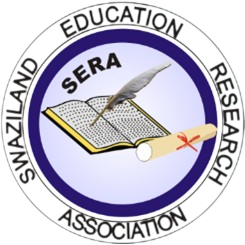
Author Guidelines
Instructions for authors
- Copyright: the exclusive original publication rights to the articles are vested with the ESWERJ.
- Previously published and/or submitted to multiple journals: The article submitted has not been published previously, nor has it been submitted to another journal for consideration.
- Article Types: The journal accepts original research articles, literature reviews, theoretical papers, case studies, and other scholarly contributions relevant to educational research in Eswatini and beyond.
- Formatting and Style: Manuscripts should be written in British English and follow the American Psychological Association’s (APA) 8th edition formatting and referencing style.
- Text: Microsoft Word; double-spaced, 12-point Times New Roman font; and figures or tables are placed within the text at appropriate points. Margins should be set at 1 inch (2.54 cm) on all sides.
- Title Page: Include a separate title page containing the title of the article, the names and affiliations of all authors, contact details for the corresponding author, and a word count for the manuscript.
- Abstract: Begin your article with an abstract of no more than 250 words, summarising the problem or basis of inquiry, main objectives, methods, findings, and implications of the study.
- Keywords: Provide a list of 3-6 keywords that accurately represent the content of your article. These keywords will facilitate indexing and retrieval of your research. Do not repeat words already in the title but rather synonymous words or terms to increase the chances of article retrieval.
- Introduction: Clearly state the problem or basis of inquiry, objectives, and significance of the study in the introduction section. Provide sufficient background information and context to engage readers and highlight the research gap addressed.
- Methods: Describe the research design, participants, data collection procedures, and analytical techniques used. Ensure that the methodology is sufficiently detailed to allow for replication or further exploration of the research.
- Results: Present your findings in a clear and concise manner. Use tables, figures, or charts as appropriate to enhance data representation and interpretation. Avoid redundant reporting of data in both textual and visual formats.
- Discussion: Interpret your findings and discuss their implications for practice and/or policy development, considering the limitations encountered in the study. Relate your results to existing literature and theories, providing a critical analysis and suggestions for future research.
- Conclusion: Provide the interpretations of the main findings supported by the evidence, such as the hypotheses of the study. Avoid introducing new information or arguments not previously discussed.
- References and Footnotes: Include all the cited literature in the list of references at the end of the manuscript. Follow the APA 8th edition referencing style, providing accurate and complete citations for all sources cited within the text. Ensure that DOIs or URLs, where available, are included for online sources. Include all information in the text; use footnotes only if really needed.
- Ethical Considerations: Clearly state any ethical considerations, such as obtaining informed consent, maintaining confidentiality, or adhering to ethical guidelines specific to your study. Provide information on any approvals obtained from relevant ethical review boards or institutions.
- Length: The length of the manuscript should be appropriate for the article type and research conducted. Generally, research articles should be between 6,000 and 8,000 words, including references and appendices.
- Submission Process: Manuscripts should be submitted electronically through the online submission system of the Eswatini Educational Research Journal (ESWERJ).
The requirements for authorship should be met by everyone who is designated as an author.
- The journal adheres strictly to the American Psychological Association’s Citation Style, therefore there are no ambiguities in its citing practices. For more information, it is advised that the author(s) refer to the most recent edition of the APA Referencing Style Manual. The authors can also review an example article from a recent journal issue.
- When a paper is submitted to ESWERJ, it must not have already been published in another journal or be under consideration for publication by another journal.
- The author’s information page must also include the paper’s title, the author’s name (first name and last name), the corresponding author’s email address, and a contact number (optional).
Manuscripts should be written in British English and follow the American Psychological Association’s (APA) 8th edition formatting and referencing style.
The journal accepts original research articles, literature reviews, theoretical papers, case studies, and other scholarly contributions relevant to educational research in Eswatini and beyond.
- Microsoft Word; double-spaced, 12-point Times New Roman font; and figures or tables are placed within the text at appropriate points. Margins should be set at 1 inch (2.54 cm) on all sides.
Provide a list of 3-6 keywords that accurately represent the content of your article. These keywords will facilitate indexing and retrieval of your research. Do not repeat words already in the title but rather synonymous words or terms to increase the chances of article retrieval.
- Include all the cited literature in the list of references at the end of the manuscript. Follow the APA 8th edition referencing style, providing accurate and complete citations for all sources cited within the text. Ensure that DOIs or URLs, where available, are included for online sources. Include all information in the text; use footnotes only if really needed.

Membership
Membership is open to persons with an active interest in education research and who pay the annual subscription fees. A person desiring to join the association may lodge an application form with the Secretary. Such application shall be considered and decided upon by the Executive Committee
You can register with the Journal to contribute with articles by filling in the registration form and become a contributing author of the Eswatini Education Research Journal
Designed & hosted by Be IT Specialists